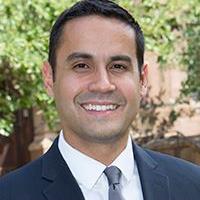Commentary on Matthew 5:21-37
The Sermon on the Mount only turns up the theological pressure as we turn to its closing verses.
Here, difficult, complex, and challenging teaching concludes a sermon that began with a radical assigning of blessing upon the wretched and despised and moved through the alarming images of salt having lost its essence and light’s shine muted. Once again, Jesus’ preaching is not characterized by easy aphorisms but by a faithful recalling of and reinvestment in ancient, trustworthy tradition. Such a tradition is trustworthy to Jesus precisely because these commandments are voiced by God.
Scholars call the rhetorical center of our passage the antitheses. Jesus points to commandments and then suggests something otherwise. “You have heard it said … but …” This pattern continues throughout our passage and even beyond it. The pattern’s function should likely be central in our preaching; preachers may even mirror or echo this antithetical rhetoric in our preaching today. But what is the weight of the contrast carried by the word “but” in our translations? What is the comparison Jesus is drawing here?
I worry that those of us who preach may be tempted to see the contrast as one of replacement. We might mistakenly hear Jesus proclaiming, “You previously have heard this commandment, but now I am setting a new one before you, for the law was inadequate, insufficient, and is thus now no longer applicable; here are a new set of commandments to replace the supposedly outdated ones you previously followed.”
However, if we preach this text in this way, we miss Jesus’ clear admonition that his teaching would not efface the law and the prophets, even in the slightest (see verse 18). Instead, the contrast here is not of replacement but intensification. Jesus here calls his listeners not to avoid these calls to righteousness but to dig that much more into them, to align our lives that much more with the abiding divine values these commandments communicate, to commit ourselves to the transformative power of God’s law and commandments.
So, Jesus teaches, it is insufficient to avoid murdering someone; certain kinds of anger and insult can themselves be a form of violence to eschew. We might note how the power and privilege of some can affect death on our neighbors, whether intended or not. The prohibition of taking someone’s life has always extended to include a prohibition against dealing in death in less explicit but no less destructive ways.
But then Jesus raises the stakes here even more. Reconciliation is a prerequisite for coming before God at the altar. That is, what if broken relationships among neighbors, family, and friends are not just social obstacles among us but a barometer for our relationship to God too? What if the obverse of murder is not just avoiding killing but reparative reconciliation? That is, the command not to murder extends even beyond the taking of life. The rejection of the deterioration of someone’s character is essential in embodying the command not to murder.
Relationality is itself a way to draw near to the God who calls us to righteousness.
So also, the prohibition of adultery extends beyond any single act to a whole orientation around relationships. Here, preachers have an opportune biblical context within which to turn the page on an assumption in too many Christian communities that it is the duty of women to shield their bodies so as to avoid tempting men. Here, Jesus teaches that it is the call of those who gaze, not those upon whom one gazes, to discipline one’s mind and desires.
Again, what matters most here is not behavior but relationality. An objectifying gaze is an obstacle to authentic community precisely because such a gaze treats the other not as a child of God, a bearer of God’s image, but as a mere object.
Thus, the call to avoid adultery is, to be sure, a way to extol the preservation of commitments we have made in romantic relationships but also a commitment to the flourishing of all those other kin we meet in non-romantic contexts. We owe it to one another to treat and see our neighbors as if they are the bearers of the image of God, for indeed that is who we all are. To boil down this revolution of relationships to dogmas of purity misses the point entirely. And once again, the stakes of such a call are so high. Better to lose a part of my body than to treat my neighbor, my kin as a mere object of my gaze and power.
But preachers also have to deal with a critical problem. In the case of both the commandments around adultery and divorce, a single perspective is taken into account: that of a man. Here, preachers have an opportunity to re-mix these ancient Jesus traditions and center the perspective of people of various genders.
In short, in your community, what obligations are Jesus’ sermon calling us to embrace? What kind of relationality is Jesus exhorting in our midst today? The #metoo movement is critical in such reflections today as is the nurturing in community of those whose gender identity complicates previously assumed binaries. In short, Jesus here centers the construction of a particular kind of community, one organized around love and not power.
It is also a community that centers trust, a trust that does not rely on oaths but on the deep commitments God’s children make to one another. Such trust, such commitment is not born of human will but of God’s gift as reflected in “the throne of God,” God’s “footstool,” and “the city of the great King” (verses 34-35). Indeed, Jesus implies, only God can “make one hair white or black” (verse 36). Only God calls and makes possible such belonging.
In the end, to what are these commandments calling us? Not to a checklist of morality but to a flourishing of life. Not to a baseline of decency but to an embodied, relational, transformative encounter with all whom we meet. Not to a sufficient set of hurdles for righteousness but to a path of wholeness with creature and creator alike.
Jesus makes these calls not over against the traditions of Israel, not in upturning the law and prophets but precisely in reveling in the witness to God’s righteousness preserved therein.


February 16, 2020